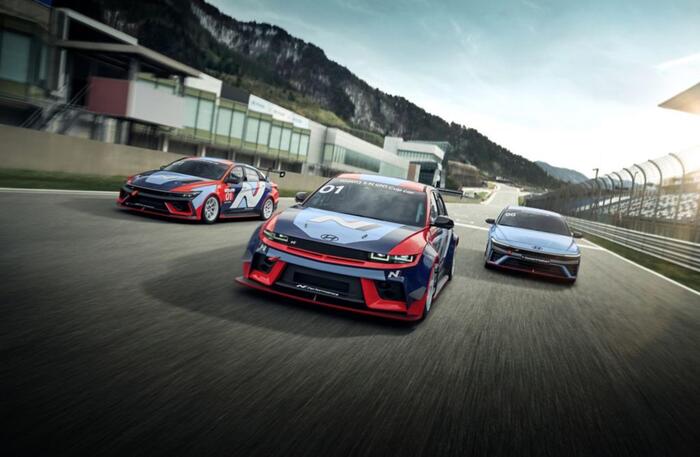The first impression:
Well, a VW bus without diesel smoke?
The Bulli is cult, after 70 years it has apparently stopped smoking.
At least this one, it's called the Naext N1 - and doesn't come from Volkswagen.
This is
what
the manufacturer says:
What the VW Group is still unable to offer in-house in 2021 is now supplied by a start-up from Seevetal near Hamburg. Naext Automotive has designed a fully electric VW Transporter. The recipe: Take an old TDI and plant a brand-new electric motor in it. The second spring is already beginning for the scrap-ripe used car. For their prototype N1, the Hamburg-based company chose a VW T5 Multivan from 2003.
"This is called Second Life," explains Nick Zippel, co-founder of Naext Automotive. Many thousands of discarded diesel and gasoline vehicles go to the car dump or export trade every year - in order to continue to pollute the environment with their exhaust gases in Africa, Eastern Europe and elsewhere for a long time to come. Naext's idea: How about continuing to use these used vehicles in the long term and converting them to electric drives?
Sure, you can buy an electric car new. But environmental engineer Zippel calculates that this is nowhere near as sustainable: large amounts of energy are required to build new cars - for a compact car the size of a Golf it is 40,000 kilowatt hours, for a small van it is even 60,000 kWh. The skeleton of the Naext N1, on the other hand, has already been produced, in the first life the VW T5 unwound a good 300,000 kilometers, then it was over because of an engine failure.
For the metamorphosis from diesel to electric, the engineers rigorously gutted the T5: the diesel engine, exhaust system, tank and other superfluous components were thrown out. The gearbox and chassis remained, only the drive train with battery and 55 kW electric motor was added. The principle is called refurbishing and is common practice in aircraft construction in a slightly different form: Passenger jets are dismantled and restored after around 15 years. "People then think they are flying a new plane," says Nick Zippel from Naext.
The company specifies the energy requirement for the conversion of the VW T5 at 10,000 to 12,000 kilowatt hours.
As a basis for their calculations, the Hamburg based on a study by the Technical University of Eindhoven on behalf of the Green parliamentary group.
According to this, e-cars have a significantly better carbon footprint than diesel and gasoline models over their life cycle - in contrast to what earlier studies suggested.
We noticed that:
the Naext N1 is pleasant to drive.
Well, speed is not its forte, an e-Bulli is not a Tesla.
Nick Zippel prefers to speak of acceleration rather than acceleration.
After all, such a T5 Multivan weighs more than two tons.
Surprisingly, the Bulli slimmed down a bit as a result of the electrical conversion - by ten kilograms.
The e-minibus can easily keep up in city traffic.
The manual transmission stayed in the vehicle because it made it possible to develop the conversion more quickly.
There is also the purism aspect: as much of the old as possible should stay in the car.
In electric mode, however, the driver can be lazy to switch gear.
Drive off and up to 50 km / h works well in gear 2, more than gear 4 is not necessary, even over land.
And how quietly it hums in city traffic.
Compared to other commercial vehicles, a VW T5 / T6 is well insulated from outside noise from the factory.
Even more pleasant tranquility can be found in the interior without nailing diesel.
You hardly have to brake at all anymore, the engine braking effect of the electric van is amazing compared to the combustion engine.
Naext indicates a top speed of 130 km / h.
If you want to save the battery, you prefer to travel with 100 things at a leisurely pace.
The maximum range with a full battery should be 250 kilometers.
There is now more power, the second and further developed prototype N2 - also a T5 - already has a capacity of 108 kW and a range of up to 350 kilometers.
The charging speed grew from 7.5 kW to 11 kW.
What purists in the Bulli scene will be happy about: In addition to the manual gearbox and clutch, the interior of the Naext N1 and N2 is also reminiscent of the previous life as a TDI.
The only new feature was the integrated navigation system in the center console, the cladding was made by the Hamburg-based company using 3D printing.
The most important data for electrical operation is shown on a display on the dashboard.
The loading area remained the old one with variable seats and tables as well as storage space.
You have to know that:
converting combustion engines to electric drives has been a niche in automotive engineering so far.
However, electric vans are becoming more popular, especially in inner-city traffic - for delivery services and craft businesses, for example.
VW in-house tuner Abt offers a fully electric T 6.1, but only in small series.
The performance is poor because the engine comes from the e-Golf.
The battery capacity is 37.3 kWh, which according to an ADAC test is sufficient for a maximum range of 138 kilometers.
VW has also just presented the new Multivan T7.
It is the first VW bus that is available as a plug-in hybrid (from 57,174 euros).
It is not available as a fully electric version, and the T7 Multivan is based on the modular transverse matrix (MQB) of the smaller car models.
As a commercial vehicle, the T6.1 remains in the range - with a classic combustion engine.
The Naext N1 or N2 is not cheap either. The pure conversion kit currently costs over 30,000 euros, next year the Hamburg-based company wants to reduce the costs to under 20,000 euros. The start-up sees itself as a supplier; independent workshops should be able to do the retrofitting for a further 10,000 euros. In addition, there are costs for maintenance. Because the basis of the Naext conversions are used cars. These can show wear or corrosion damage.
The bottom line is that the Naext concept will pay off not only ecologically, but also financially for many customers, believes co-founder Nick Zippel - especially if politicians also pay an environmental bonus for electrical conversions and not just for the purchase of new electric vehicles .
Naext promises a service life of 200,000 kilometers for its batteries and electric motors.
Further prototypes in the passenger car segment are to follow in 2022 - the VW Golf and Toyota Corolla converted to electric drives.
We will not forget that:
The suddenly flashing error message "Engine fault - workshop".
Every TDI driver gets a racing heart, but engineer Nick Zippel reassured him that everything is great with the electric drive.
"It's just an old ad from the Diesel world."






